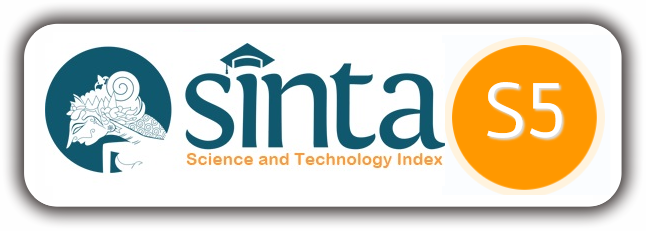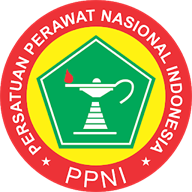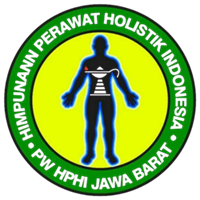Author Guideline
Jurnal VNUS only accepts original manuscripts that have not been published at home or abroad Manuscripts can be in the form of research results, innovative thought concepts resulting from literature reviews that are useful to support the advancement of science, education and professional nursing practice. Manuscripts are written in an effective and academic style. Manuscripts of research results should be arranged according to the systematics as follows :
1. Language:
The language used in the text of this paper is English
2. Title:
- Describing the contents of the text is concise and clear, written no more than 14 words.
- Written in English
- The title of the article is printed in uppercase in the middle using max 12 pt Palatino Linotype fonts.
3. Author's Name:
- Typed without a title and consistent in the spelling of the name.
- Arrangement of the author's name must be in the order agreed upon by all author members
- Put a check mark (*) next to the author's name, to indicate that the author is the contact person for the article
4. Abstract:
- Typed in English and the essence of all writing, including: problems, goals, methods, results and conclusions. (IMRAD: Introduction, Methods, Result and Conclusion).
- Abstracts are typed with full sentences up to 250 words.
- Under the abstract there are 3-5 key words (keywords).
5. Introduction:
- Includes background problems sequential arrangement: Problem, Chronology, Scale, Solution
- Length of no more than two pages.
6. Materials and Methods:
- Contains an explanation of the design, population, sample, variable, tools used (explain the validity test of the tools used).
- The method must be explained as completely as possible so that other researchers can
- Provide information about the time and place of the research.
- Include the research code or ethics number, to prove that your research has gone through the licensing process.
7. Results:
- It is stated clearly in the form of narration and the data entered is related to the purpose of the study, if necessary, accompanied by illustrations (paintings, pictures, graphics, diagrams), tables or photos that support data, simple and not too large.
- Each table of dissertations is brief and does not repeat data that has been read in the table.
8. Discussion:
Explain the meaning of the results of research which includes: facts, theories, and opinions.
9. Conclusions:
In the form of conclusions from the results of research in the form of narratives not specified in points that refer to the purpose of the study. Conclusions are written briefly in a separate paragraph at the end of the discussion and are not a separate subheading.
10 Acknowledgements:
Acknowledgements are addressed to people or institutions that have made important contributors to the implementation of the research (lenders, data source providers, research materials, research facilities, etc.), but not to the author team. At the end, the author must include a statement that there is no conflict of interest.
11. Authors' Contributions:
Author Contributors The contributions of each author, including ideas, data generation, data analysis, manuscript preparation, and funding, should be listed here using only their initials, for example, Ar. Pe. Fa.
12. Conflict of Interest:
Conflict of interest The author declares that the research was conducted in the absence of any commercial or financial relationships that could be construed as a potential conflict of interest.
13. Funding:
Funding Information The institution that funded the research conducted.
14. Citation:
Referrals and citations use enclosed references (name, year). Example: (Kusnanto, 2009).
11. Literature:
The reference source (literature) as far as possible is the library published in the last 10 years is the result of research reports (thesis, thesis, and dissertation) and scientific articles in scientific journals / magazines.
Each manuscript must include a reference list containing only the quoted work and using the Mendeley, EndNote or Zotero tool. Each entry should containing all the data needed for unambiguous identification. Referencing style for this journal follows American Psychological Association (APA) style. with examples as follows:
Reference to a Journal Publication:
Efendi, F., Chen, C. M., Nursalam, N., Indarwati, R., & Ulfiana, E. (2016). Lived experience of Indonesian nurses in Japan: A phenomenological study. Japan Journal Nursing Science, 13(2), 284-293. doi:10.1111/jjns.12108
Reference to a Book:
Kurniati, Anna and Efendi, Ferry and Kurniati, Anna and Efendi, Ferry (2013) Human Resources for Health Country Profile of Indonesia. WHO South-East Asia Region, New Delhi.
Reference to a Website:
MoH. (2013). Sosialisasi Global Code of Practice on The International Recruitment of Health Personnel [Dissemination Global Code of Practice on The International Recruitment of Health Personnel]. Retrieved December 2, 2014, from http://bppsdmk.depkes.go.id/tkki/data/uploads/docs/workshop-sosialisasi-gcp.pdf
Reference in Conference:
Nursalam, Efendi, F., Dang, L. T. N., & Arief, Y. S. (2009). Nursing Education in Indonesia: Todays and Future Role. Paper presented at the Shanghai International Conference, Shanghai.
12. Mathematical Equations:
Clearly stated. Decimal numbers are marked with points, not a comma.
13. Table:
- As simple as possible, sent in MS Word format.
- Tables are numbered and referenced sequentially in the text.
- Table numbering is followed by a full stop (.)
- The title is written at the top of the table, please write it briefly and clearly and begin with a capital letter just at the beginning of the table title.
- Note or description if needed (at the bottom of the table, to explain abbreviations in the table).
- All abbreviation in the table are explained in the footnote.
- Lines using only horizontal lines do not use vertical lines
- The table must be referred to in the discussion.
14. Illustration:
- In the form of paintings, pictures, graphics, or diagrams are numbered and referenced sequentially in the text.
- The title is given briefly and clearly under the illustration (not in the illustration)
- Information on illustrations or photos is made without using the border.
15. Black and white/colored photos
Contrast, sharp, clear, and should be taken in JPEG format, or other digital formats that can be edited.
or download the manuscript template here:













